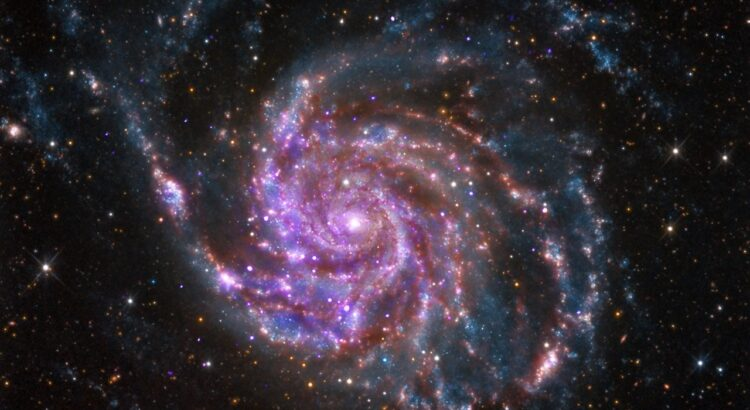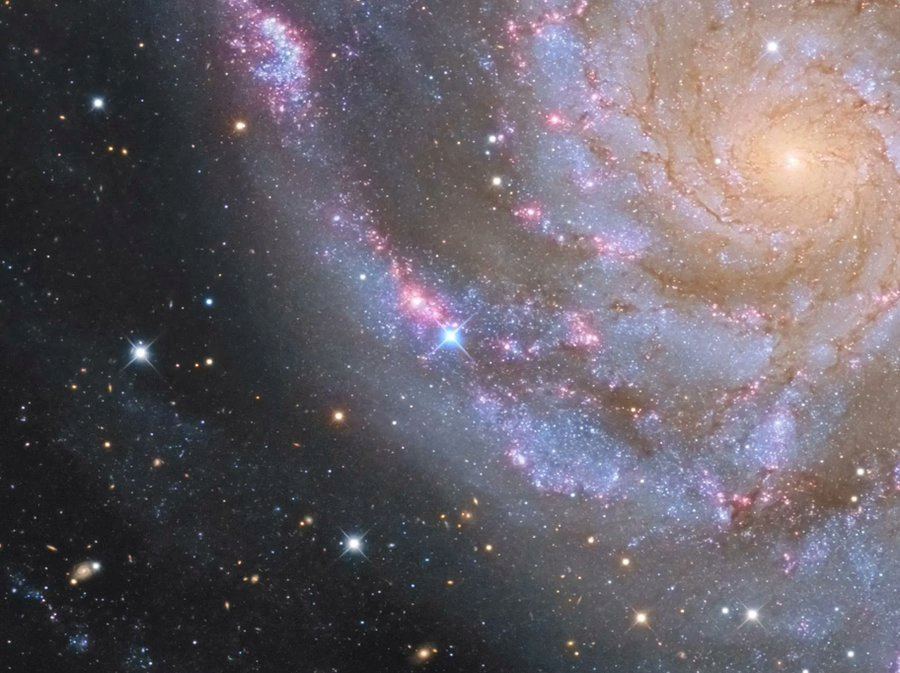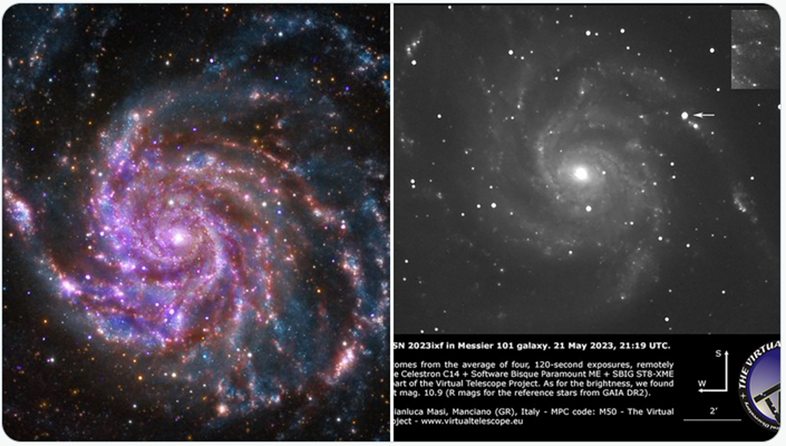? A supernova has exploded so close to Earth that it is visible through a telescope, but for how long

Chandra studying the brand new supernova in the Pinwheel galaxy. Follow-up observations already show that SN 2023ixf is a Type II supernova.
Two weeks ago, Science et Vie invited you to see a rather rare celestial phenomenon. A supernova (named SN 2023ixf) that exploded in the Pinwheel Galaxy, also known as Messier 101. This event is still visible and will be for some time to come.
“If you have a telescope, now is the time to point it in the direction of the Big Dipper. Currently, you can watch a giant star explode before your eyes and shine like a billion suns. This is what you could read a few days ago on the Science et Vie website and you are in luck, because there is still time to admire this supernova! We explain how and, above all, why!
A supernova still visible with non-professional telescope
If you weren't lucky enough to see the new supernova explode in the night sky, don't worry. It should be possible to admire the supernova “all year round, or even longer”. Scientists expect it to slowly fade away until it can no longer be seen in visible light within a while.
“It will stay bright. We expect the brightness to remain stable for weeks or even months. Over the next year, or two, three years, it will eventually fade to low detectability. Daniel Perley, an astrophysicist at Liverpool's John Moores Observatory, told Space.com.
One of the biggest and brightest
This new supernova first erupted on May 20 when supernova hunter Koichi Itagaki of Yamagata, Japan spotted a new bright spot in the Pinwheel Galaxy. The supernova was confirmed the following day by the Samuel-Oschin telescope at the Palomar observatory in California. This supernova is already exceptional, as it is one of the largest and brightest seen in a decade.

AstroBin's Image of the Day: "[TEAM OMICRON] The blue Supernova SN2023ixf in M101 - As if you were there (1m Deltagraph)" by Jeffbax Velocicaptor
But this celestial event is a bit different from its predecessors, according to University of Texas researcher Peter Brown. Most supernovae of this type drop sharply into the ultraviolet immediately after their discovery. But SN 2023ixf has remained consistently bright, no offense to NASA Swift's Multispectral Space Telescope, observations of which are still ongoing.
“Since this one is different, it might fade in the future. But it could stay bright enough for an amateur astronomer with a good telescope to see it for months. said Peter Brown.
Located approximately 21 million light-years from Earth. Professional and amateur astronomers around the world turn their telescopes and cameras to the Moulinet Galaxy to observe this rare phenomenon. Here's how.
How to admire the supernova?
It should probably be visible for a while, but that's no reason to wait! It will be difficult if not impossible to see it with the “naked eye”. It will be necessary at least to bring high magnification binoculars in a place where light pollution is almost zero. Otherwise, you can admire the supernova with a so-called "beginner's" telescope. It will still be necessary to opt for a wide-angle eyepiece with low magnification.
Fortunately, for budding astronomers located on the northern hemisphere, the Moulinet galaxy is circumpolar. Which means it stays above the horizon all year round. The galaxy is also located near the Big Dipper. This constellation is one of the most recognizable in the world, with its “large saucepan” shape. The galaxy lies near the two stars at the end of the Big Dipper "handle", towards the stars Mizar (Zeta Ursae Majoris) and Alkaid (Η Ursae Majoris). The Moulinet Galaxy (M101) is located about halfway between these two stars.
Once you've located the Pinwheel Galaxy, it's time to spot the supernova! SN 2023ixf lies towards the end of one of the galaxy's spiral arms. It should be fairly easy to identify, as it will appear brighter than other stars in the galaxy. Good watching!

Today Chandra is studying a brand-new supernova in the Pinwheel Galaxy that was first discovered on May 19, 2023. Follow-up observations already show that SN 2023ixf is a Type II supernova and that it's likely to continue to brighten, remaining visible to telescopes for months.
?Comment admirer la supernova
Elle devrait probablement être visible un certain temps, mais ce n’est pas une raison pour attendre ! Il sera difficile pour ne pas dire impossible de la voir à « l’œil nu ». Il faudra au minimum se munir de jumelles à fort grossissement dans un endroit où la pollution lumineuse est quasi-nulle. Sinon, vous pouvez admirer la supernova avec un télescope dit « pour débutant ». Il faudra tout de même opter pour un oculaire grand-angle à faible grossissement.
Heureusement, pour les astronomes en herbe situés sur l’hémisphère nord, la galaxie du Moulinet est circumpolaire. Ce qui signifie qu’elle reste au-dessus de l’horizon toute l’année. La galaxie est également située à proximité de la Grande Ourse. Cette constellation est l’une des plus reconnaissables au monde, avec sa forme de « grande casserole ». La galaxie se trouve près des deux étoiles à l’extrémité de la « poignée » de la Grande Ourse, vers les étoiles Mizar (Zeta Ursae Majoris) et Alkaid (Η Ursae Majoris). La galaxie du Moulinet (M101) est située à peu près à mi-chemin entre ces deux étoiles.
Une fois que vous avez localisé la galaxie du Moulinet, il est temps de repérer la supernova ! SN 2023ixf se trouve vers l’extrémité de l’un des bras en spirale de la galaxie. Elle devrait être assez facile à identifier, car elle apparaîtra plus brillante que les autres étoiles de la galaxie. Bonne observation!
Today Chandra is studying a brand-new supernova in the Pinwheel Galaxy that was first discovered on May 19, 2023. Follow-up observations already show that SN 2023ixf is a Type II supernova and that it's likely to continue to brighten, remaining visible to telescopes for months.
Even after it can no longer be seen in visible wavelengths, the supernova will likely continue to shine in other parts of the spectrum. Peter Brown said large telescopes should be able to observe the new discovery for years to come, while space instruments like NASA's Hubble Telescope or the James Webb Space Telescope might be able to study the explosion for decades.
Source: Space / IFLScience
Source : websites

